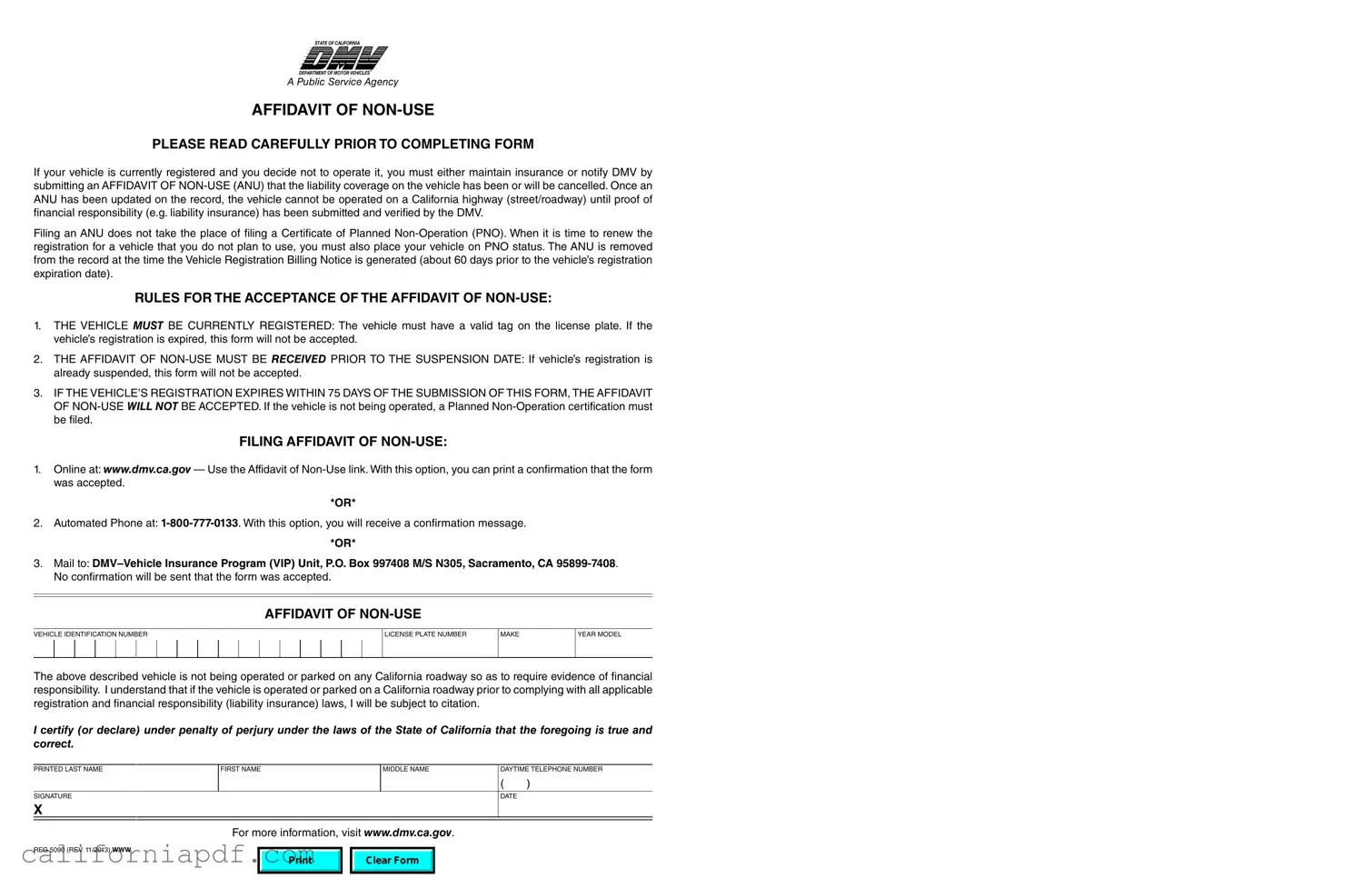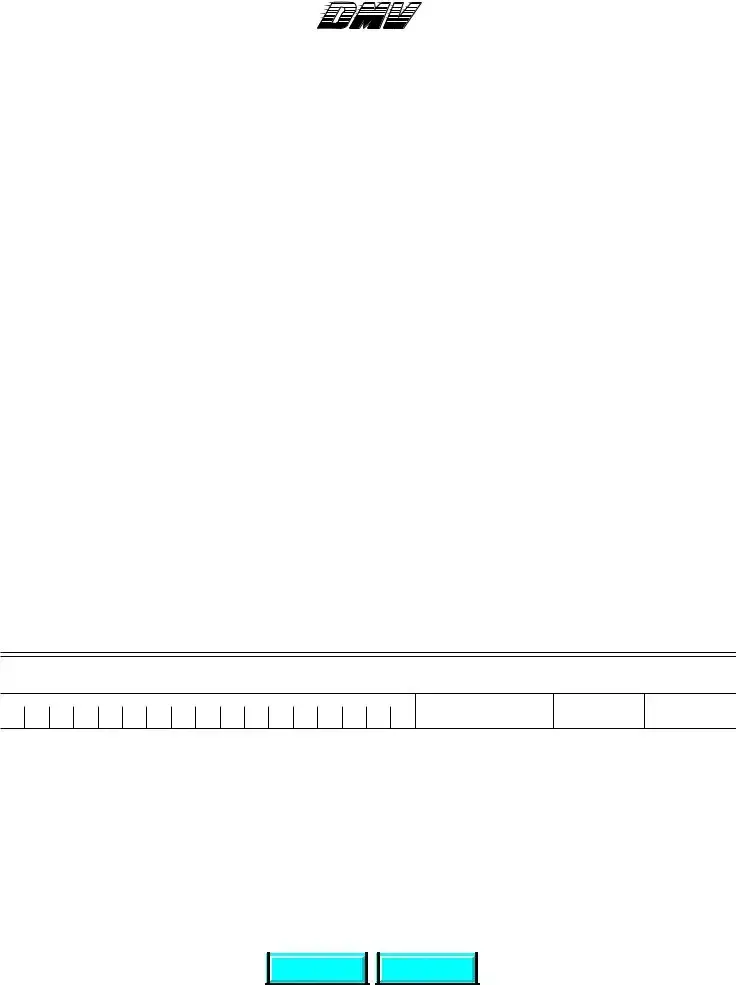The California Affidavit of Non-Use REG 5090 form shares similarities with the Planned Non-Operation (PNO) Statement. Both documents are used by vehicle owners in California who wish to report that their vehicle will not be driven, moved, or parked on public roadways, thereby exempting them from the requirement to maintain continuous registration. The key difference lies in the timing and the duration for which the vehicle will not be used; the Affidavit of Non-Use can be filed at any time for a temporary period, whereas the PNO must be filed before the vehicle's registration expires if the owner anticipates not using the vehicle for the upcoming registration period.
Another related document is the Affidavit of Vehicle Sale. This affidavit is used by individuals to notify the Department of Motor Vehicles (DMV) that a vehicle has been sold. While the Affidavit of Non-Use indicates a vehicle will not be on the road due to non-use, the Affidavit of Vehicle Sale signals a change in ownership. Both forms serve to update the DMV’s records to reflect the current status or condition of a vehicle, ensuring the proper individuals are held responsible for registration, fees, and taxes.
Similarly, the Application for Duplicate Title form also interacts closely with DMV records, specifically when a vehicle's title is lost, stolen, or damaged. Owners must submit this form to receive a new title. Like the Affidavit of Non-Use, it is a critical step in managing a vehicle’s legal documentation and ensuring the owner's ability to prove ownership and control over the vehicle's registration and disposition status.
The Liability Release Form is another document dealing with vehicle ownership and responsibility. When ownership is transferred, this form releases the previous owner from liability for anything that happens with the vehicle after the date of sale. The nexus with the Affidavit of Non-Use is the importance of properly documenting the status of a vehicle to protect the interests of the owner. Both documents help delineate the periods for which an owner remains responsible for the vehicle.
The Vehicle Storage Agreement also parallels the Affidavit of Non-Use in terms of vehicle inactivity. This agreement is made between a vehicle owner and a storage facility, where the owner pays to store the vehicle off public roads. While the Affididavit is a declaration to the DMV, the storage agreement is a private contract. Both, however, formalize the status of a vehicle as not being in regular use on public roads.
The Notice of Transfer and Release of Liability form is another critical document submitted to the DMV when a vehicle changes hands. It protects the seller by notifying the DMV that the ownership of the vehicle has been transferred, thereby releasing them from future liability. Though it serves a different purpose, it is similar to the Affidavit of Non-Use as both are forms that help update the DMV records regarding significant changes in a vehicle’s status, ensuring that liability and responsibility are correctly assigned.
Last is the Certificate of Non-Operation, which is often confused with the Affidavit of Non-Use. This certificate is sometimes required when a vehicle has not been operated for a long period and needs to be registered again. It serves as proof that the vehicle was not in use and thus not subject to certain fines or penalties. Both the certificate and affidavit inform the DMV about the periods during which a vehicle was not operational, although they are used at different stages of the registration or re-registration process.

